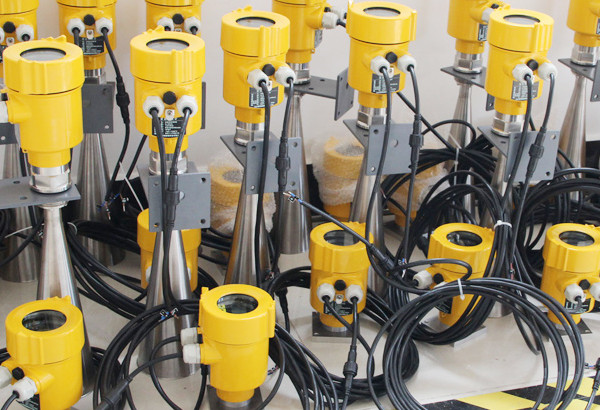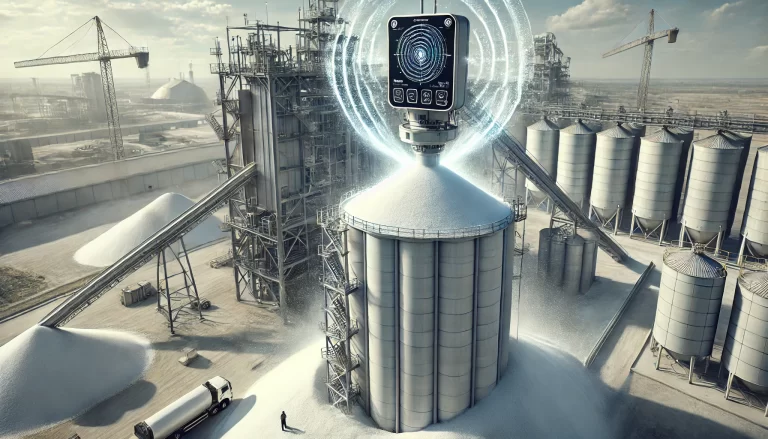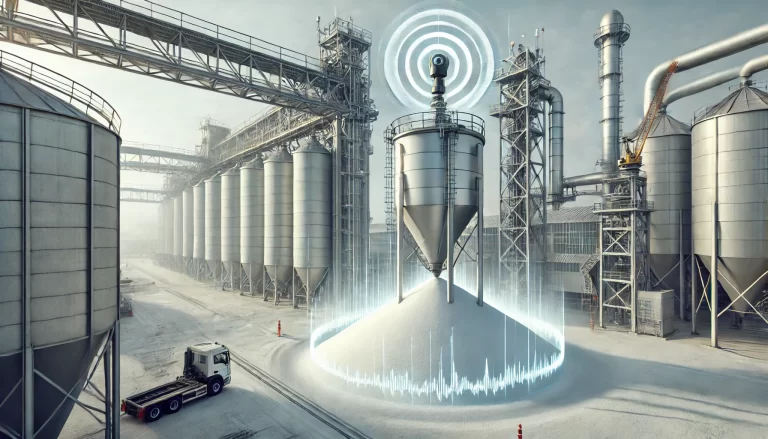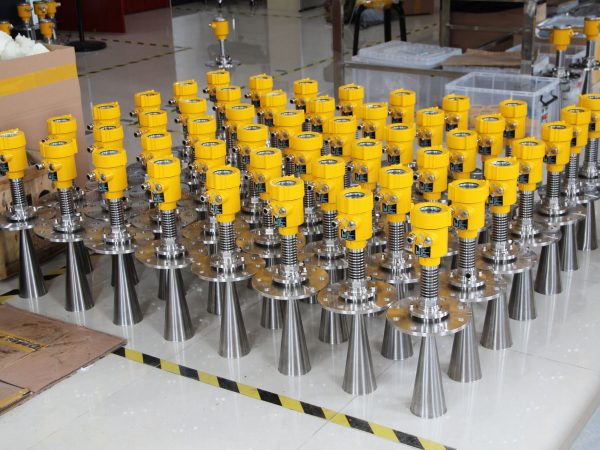As industrial automation continues to advance, precise and reliable level measurement technology has become an indispensable part of the production process. This is particularly critical in the measurement of alumina powder silos, where selecting the right level meter is of paramount importance. This article explores the application and advantages of radar level meters in alumina powder silo measurement.

Principle of Radar Level Meters Radar level meters measure material height by emitting electromagnetic waves and receiving the reflected waves (echo). There are two primary working principles of radar level meters: continuous frequency modulation and pulse radar. Continuous frequency-modulated radar measures the frequency difference in the reflected signal by continuously varying the emission frequency, calculating the material level based on this difference. Pulse radar, on the other hand, emits pulses of a fixed frequency and determines the material level based on the time it takes for the echo to return.

Advantages of Radar Level Meters in Alumina Powder Silos
- High Precision: Radar level meters can provide millimeter-level measurement accuracy, which is particularly crucial for applications that require stringent production control.
- Strong Interference Resistance: Radar waves possess strong penetration abilities, enabling the radar meter to function stably in harsh environments with dust, steam, and other disturbances. This makes it particularly suitable for the high-dust environment of alumina powder silos.
- Ease of Installation and Maintenance: Typically, radar level meters are installed at the top of the silo, avoiding direct contact with the material. This circumvents issues that traditional contact-based level meters face, such as interference from the material. Additionally, the structure is simple, making maintenance straightforward.
Case Study One company, for example, adopted radar level meters in its alumina powder silos. The radar successfully resolved the measurement instability issues encountered with other instruments. Specifically, in finished alumina powder silos, the radar level meters performed outstandingly, maintaining stable measurement signals even when alumina dust concentrations were high.

Challenges in Practical Application While radar level meters offer numerous advantages in alumina powder silo applications, some challenges still exist in practice:
- Dust Interference: Alumina powder can significantly affect radar waves, potentially weakening or even losing the echo signal. To mitigate this, optimizing radar parameter settings or adding dust removal equipment can reduce the impact of dust.
- Cost Issues: Compared to other types of level meters, radar level meters tend to have higher upfront costs. However, considering their long-term stability and low maintenance requirements, the overall cost of ownership is relatively low.
- Technical Expertise: Although radar level meters are relatively easy to operate, some technical support is required during initial use. It is essential to choose experienced suppliers for installation and commissioning, as well as ensure regular training and maintenance.

In conclusion, radar level meters have become the ideal choice for alumina powder silo measurement due to their unique advantages. With continuous technological development and refinement, they are expected to play an increasingly important role in future industrial production.
